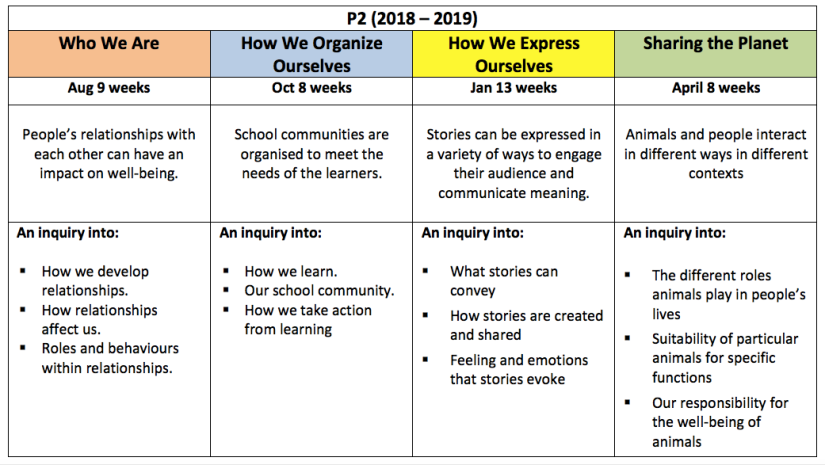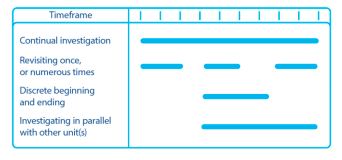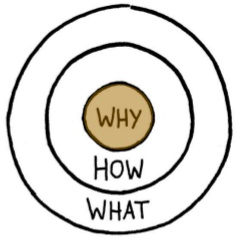Edna Sackson – ‘What if we liberate ourselves from the traditional curriculum prison and explore new vistas?’
Tania Mansfield – ‘What if we were brave and daring? What if we put learners and learning before curriculum and standards and paperwork?’
This blog post has been inspired by conversations I have read online recently regarding ‘time’, or the perceived lack of, and the development of flexible units of inquiry. I have come to believe that these conversations are closely connected with one directly effecting the other.
I have especially been interested by the conversations surrounding Edna Sackson’s blogpost, Liberating the Programme of Inquiry, and Tania Mansfield’s response, Those Beautiful Questions. Both these educators are asking some truly ‘beautiful questions’ that are pushing the boundaries and challenging the traditional ideas about our approach to education. Both represent a growing number of modern educators that are beginning to ask ‘What if…’ with regards to teaching and learning. It is an exciting time to be an educator as traditional barriers in education are being seen to be taken down. We seem in the midst of an educational revolution led by educators and administrators that dare to ask, ‘What if….’. It is a time to be ‘brave and daring’.
‘Time’ seems to be a continual challenge for many educators. The beginning of each school year signals the start of a new race to meet numerous deadlines of learning outcomes, expectations and assessment. With all the other distractions that school life brings (e.g. holidays, sports events, celebrations etc) it seems that we are in a constant race against the hands of time and many of us feel that we are always on the losing side. This yearly up hill struggle provides needless stress for both educators and students alike. I was once part of this yearly struggle but things became much easier when I came to the conclusion that ‘time’ is not the issue but rather how I approached the curriculum. Authentic learning is not somethings that we can compartmentalize into convenient timeframes and boxes. To attempt to do so creates an unnatural learning environment.
The timetable below represents my traditional approach to inquiry. As you can see the 4 units of inquiry have been placed neatly into set timeframes. Approaching inquiry in this manner also has an effect on the specific subject learning within each of the inquiries e.g. Maths and Language etc. So not only are we putting self imposed timeframes on the inquiries themselves but also to the other areas of the curriculum that are connected to each specific inquiry. Are we really saying that authentic inquiry and learning has a clear start and end date? This approach seems too neat, tidy and regulated for any real authentic, deep or personalised learning to occur. Approaching the curriculum in this manner also begins the clock ticking on many of the self-imposed deadlines.


I feel our traditional approach to teaching and learning has always been to neatly arrange our curriculums within specific blocks of learning. If we are continually working within a set timeframe we are placing unnecessary pressure on both educators and our students to complete tasks and meet objectives. We are also restricting authentic learning and exploration as our students learn at an unnatural time and pace. We create timetables that are ‘repetitive and predictable’ allowing little flexibility for new and authentic inquiries that may occur.
The arrival of the Enhanced PYP has gone some way in offering some flexibility in the implementation of the programme, but it is going far enough?

The PYP states, ‘Greater flexibility on starting points and time frames for your units of inquiry will create a range of learning opportunities, for example, one unit could run throughout the whole year, while others could be revisited once or numerous times, with some overlap where appropriate.‘
This year I have made greater attempts in creating a more flexible approach to inquiry. This has been my third year working with this specific curriculum and each year I have been able to make moderate changes to allow the inquiries to flow more naturally and offer greater opportunities for student agency. Many of these changes have so far only been able to occur on a personal level as we are still to have these conversations on a whole school level.
Below I have placed an example of my own implementation of the inquiries for this year.

Even this approach seems to suggest a beginning and a start time to inquiry when in reality the inquiry for many of our students has already begun long before they enter the classroom and will continue long after. If we take ‘How We Express Ourselves’ as an example. I would be naive to believe that most, if not all, children had not developed a sense that stories are a means of communicating meaning and that they can be told in a variety of ways. In most instances they may not be actually aware that they acquire this information but it is there. In all sense and purposes their inquiry has long begun and it will continue long after the date that is penciled into our yearly calendars. So what are we need to ask ourselves what we are actually doing within these timeframes of inquiry. We need to consider that we are using these time periods to assess, develop and push our students understanding of subjects that may be all too familiar with already. We need to be clear that we are not the ones that have started or will finish our students personal journeys of learning but are on hand to steer and support when the time demands it. This is also the case for each of inquiries for the year.

So if we begin to think more in terms of continuous inquiry, rather than ones with a beginning and an end, then our curriculum begins to look at lot more similar to the image above. All transdisciplinary themes, all inquiries and all learning running simultaneously throughout the year. This will in turn allow for a flexible curriculum that allows for new opportunities for learning. Approaching the curriculum in this manner provides the opportunity for our students to choose the when, where and how they learn. It is important that for modern education and the need for student agency that we provide our students with these flexible systems that allow for choice in learning.

